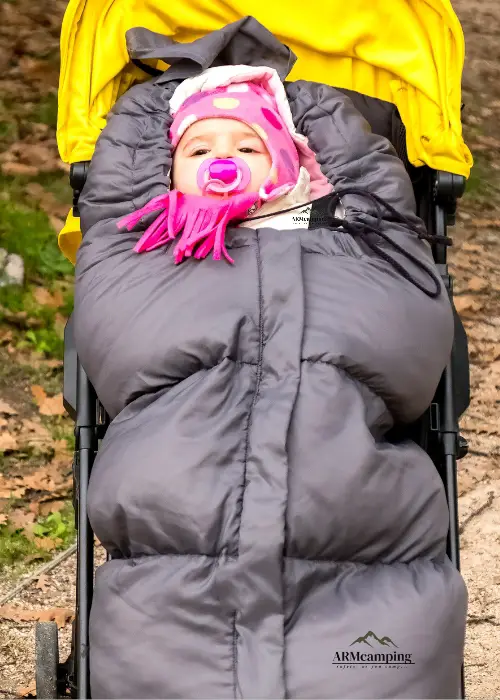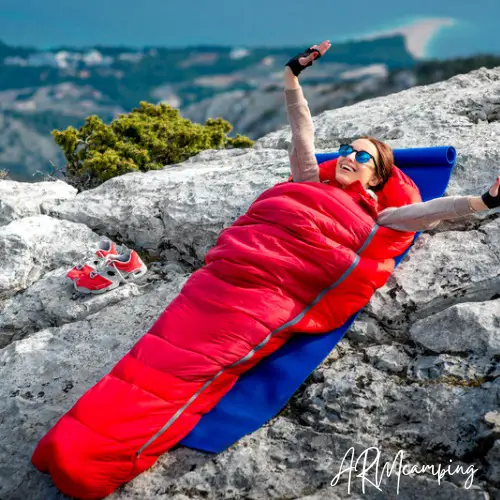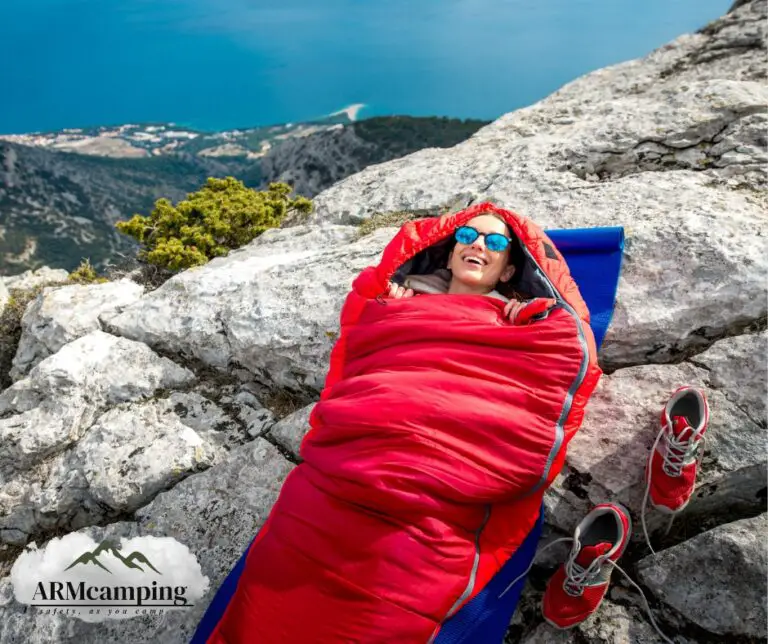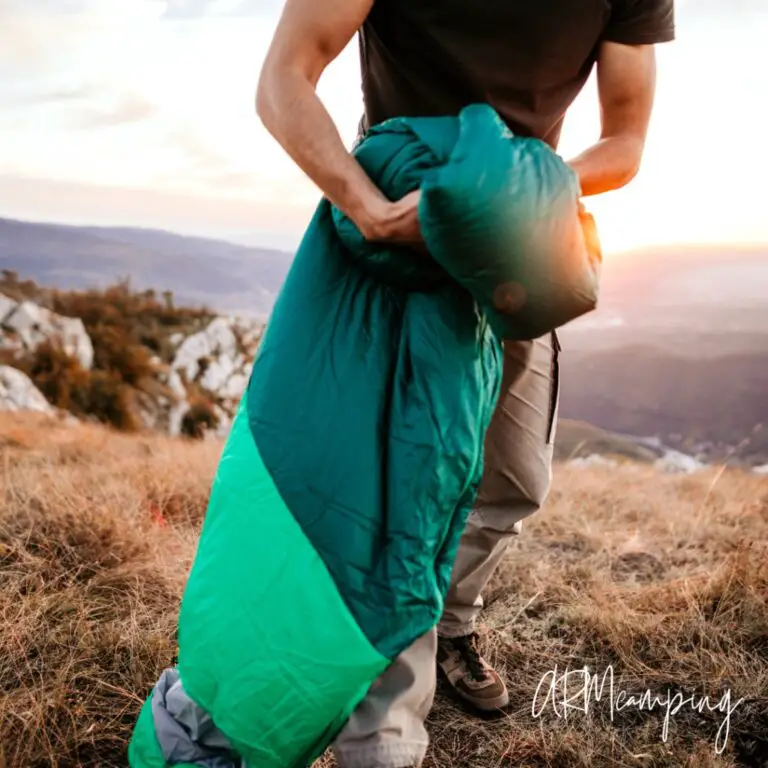
What Is the Best Temperature Sleeping Bag
Table of Contents
A good sleeping bag can be a game-changer for camping. It can be the difference between a good night’s sleep and a miserable night. The best sleeping bags will keep you warm without overheating, and there are a few different reasons to buy them.
The best temperature sleeping bag will depend on your experience level, which type of camping you’re doing, and your preferences.
The right temperature sleeping bag should keep you warm all night when it is cold, or vice versa. This depends on the size and the temperature ratings in your bag.
They label most sleeping bags with a temperature rating, which is expressed as degrees Fahrenheit. To find the sleeping bag that’s right for you, simply choose your comfort level.
Selecting the best temperature sleeping bag is a process that requires consideration of many factors. You need to consider your budget, the season you will use it, and your personal preferences.
As this is an important decision to make. You want a sleeping bag that’s comfortable, warm, and affordable, but you don’t want to sacrifice quality or comfort in order to get it.
With so many options out there, how do you choose? Here are some tips on how to choose a sleeping bag that will meet your needs while also keeping you safe:
When choosing a sleeping bag, there are several things to consider:
How Much Money Are You Willing to Spend?
There are many factors that go into deciding on a sleeping bag. The first thing you should consider is how much money you have available to spend. This will help determine which sleeping bag is best for your needs.
The next thing you should look at is how much weight you want your sleeping bag to be. If you are looking for something lightweight, then consider spending less money on a smaller one. However, if you want something heavier, then it may cost more money but also be more durable.
There are other factors such as the length of the zipper and how many pockets there are in the bag that can affect its price tag as well as overall quality.
If you have questions about what type of sleeping bag may work best for your needs, please feel free to reach out!
What Kind of Material Do You Want?
The first thing to consider is what kind of material do you want? It’s important to know that there are different sleeping bags, such as synthetic and down.
Down is much more expensive than synthetic, but it provides better insulation and loft. It’s also more compressible than synthetic, meaning it packs up small and doesn’t take up much room in your backpack. Down also feels softer, so you’ll have a more comfortable night’s sleep.
Synthetic bags are cheaper than down and still provide very good insulation quality. They’re also durable and don’t pill or lose their shape over time as down can do, which makes them more user-friendly for overnight trips.
Synthetics also offer better moisture management than down does, so they’re not as susceptible to getting wet when wet outside and dry out faster when wet inside the bag during storms.
A good sleeping bag will keep you warm in cold weather and keep you cool in hot weather. It should be lightweight, durable, and water-resistant. It should also be able to protect you from rain or snow.
What Season Do You Plan to Use It In?
If you are going camping in the winter, then a summer sleeping bag is not suitable. You need to consider how much insulation is needed and how warm it will get during the night.
A summer sleeping bag might feel cool when it’s only 30 degrees outside, but if you are planning on getting up at night and hiking along with your camping gear, then you want something with more insulation. For example, they might rate a winter sleeping bag from +15°F to -15°F, while a summer sleeping bag might be rated from +30°F to 50°F.
What Activities Do You Plan on Doing in The Future?
The most important thing is to select the best temperature sleeping bag. It is advisable to choose one that fits your needs and requirements.
If you are planning on doing a lot of activities in the future, then it is advisable that you buy a sleeping bag that can keep you warm at night. The best way to do this is by looking at the ratings of the sleeping bags and how many people have used them before.
Picking the best temperature sleeping bag. This will ensure that you are comfortable while sleeping at night. You should also look at what activities you plan on doing in the future, because this will help determine which type of sleeping bag would suit your needs better.
What Is the Best Sleeping Bag for Sub-Zero Temperature?
The best sleeping bag for sub-zero temperatures should be synthetic. They comprise long fibers which are hollowed and filled with layers of synthetic materials. It is tightly woven together these fibers, which makes them lighter than cotton. They also make sure they are warm.
Most synthetic bags come with zippers, but this makes them more expensive than cotton bags. You can get a good price on these bags if you purchase them at a garage sale or secondhand store. If you want to buy new, look for one that has extra insulation such as down or goose down inside the bag itself.
A good polyester bag will keep you warm all night long, even if it gets wet from sweat or condensation from your breath; however, it is not an ideal sleeping bag for sub-zero temperatures because it’s not very warm when wet!
However…
The best sleeping bags for sub-zero temperatures can be used in temperatures ranging from -40 degrees Fahrenheit to -40 degrees Fahrenheit and below. They come in different sizes and shapes depending on your needs, but the most common ones are rectangular-shaped bags that fit snugly around your body to keep you warm during the night.
and as well…
The best sleeping bag for sub-zero temperatures should be waterproof and have a zipper so you can open it up when it gets warm outside and close it back up again before going inside your tent or house at night.
The zipper should also be wide enough so you don’t have any problems breathing through it while you’re sleeping because moldy air can ruin your whole night!
What Is the Best Temperature Sleeping Bag?
The best temperature sleeping bag is one that you can use in any situation. If you’re camping, a lightweight, warm sleeping bag that’s not too cold will be most comfortable.
If you’re backpacking or going out during the summer and need something that’s warm enough to keep you warm but not too hot, then a warmer bag will work better.
If you’re going on an overnight trip on a mountain trail, then it might be best to go with a warmer sleeping bag that can keep you warm without being too hot.
For those who spend many nights outside in cold weather, there are many options available to them. Some of these include:
Season |
Temperature |
|
| Summer | nill | +32° degrees Fahrenheit and up |
| Cold | nill | +15° degrees Fahrenheit and low |
| Hunting | 2, 3, and 4 season | +15° to 0° degrees Fahrenheit |
| Camping | 2, 3, and 4 season | +10° to 0° degrees Fahrenheit |
| Backpacking | 2, 3, and 4 season | +15° to -10° degrees Fahrenheit |
| Adults | 2, 3, and 4 season | +15° to +32° degrees Fahrenheit |
| Children | 2, 3, and 4 season | +10° to +40° degrees Fahrenheit |
| Teens | 2, 3, and 4 season | +15° to +32° degrees Fahrenheit |
| Dogs | 2, 3, and 4 season | +32° degrees Fahrenheit |
More detail… (001)
How Are Sleeping Bags Rated for Temperature
Sleeping bags are rated for temperature by their insulation and comfort. The higher the rating, the more insulating material there is in a sleeping bag. Sleeping bags with lower ratings are more comfortable and have more features like pockets and zippers, but they don’t keep you as warm.
For example, a sleeping bag may have a rating of 0° F (-17.8° C), which means it’s not insulated enough to keep you warm if it’s below freezing outside. A sleeping bag that has a rating of -10° F (-23° C) will keep you warmer than one with a 0° F rating because it has more insulation, but it will not work as well if it’s colder than -10°F.
The other factor that affects how warm a sleeping bag is, is how much insulation it has per square inch (in other words, how thick the padding is). The thicker the padding, the less warmth you’ll lose when you’re sleeping inside it—even if its temperature rating isn’t very high!
How Do Sleeping Bag Temperature Ratings Work
A sleeping bag’s temperature rating is an indicator of its warmth. The higher the number, the warmer it will keep you. A lower number means that the bag is colder than that number, so it will be cooler than the rating suggests.
To understand how these rating work, think back to our childhood: if you were cold while sleeping in your bed at night and your parents said that they had bought a new blanket for you, would they have been telling the truth? Probably not.
They probably said something like, “This blanket is rated at 50 degrees Fahrenheit.” This tells us about two things: how warm or cool a piece of fabric can keep us from feeling in relation to how cold we are (50 degrees = warm), and also how much heat it holds (50 degrees = lots).
So if someone tells you that their sleeping bag has a 30-degree temperature rating, this means that when it’s freezing out—like at night or when hiking in winter—it will maintain an average temperature of around 30 degrees Fahrenheit on your body.
So what does this mean for you? If it’s summer in your area, then it’s important to look for a sleeping bag with a low-temperature rating because that means it will keep you comfortable even if it gets warm outside!
How to Read Sleeping Bag Temperature Rating
There are a few ways to determine the temperature rating of a sleeping bag. You can use a thermometer, but these aren’t always accurate, so we’ll show you how to read one directly on the bag itself.
The first thing to do is find the temperature rating for your sleeping bag in its packaging. The rating should be printed on the outside of the bag’s tag or on its label—typically, it will be written in either Fahrenheit or Celsius. The numbers should correspond with the temperature range for which this sleeping bag is intended: 20°F (68°F) for temperatures below 0°F (-18°C), and 50°F (122°F) for temperatures above 32°F (0°C).
Next, take your thermometer and place it inside the opening of your sleeping bag. Then lay down in your sleeping bag and wait half an hour before taking a reading with your thermometer; you’ll want to make sure that you’re sleeping comfortably before reading the temperature rating on your thermometer!
Finally
In the end, it all comes down to your personal preference when it comes to sleeping bags. Are you someone who prefers roomier and lighter sleeping bags because you like to move around while you sleep? Or maybe you’re more of a minimalist who can’t stand being weighed down by any more than is absolutely necessary. Either way, there should be a temperature sleeping bag in this guide that’s right for you—as long as you take your time and think through your decision carefully before making a purchase. Good luck!







